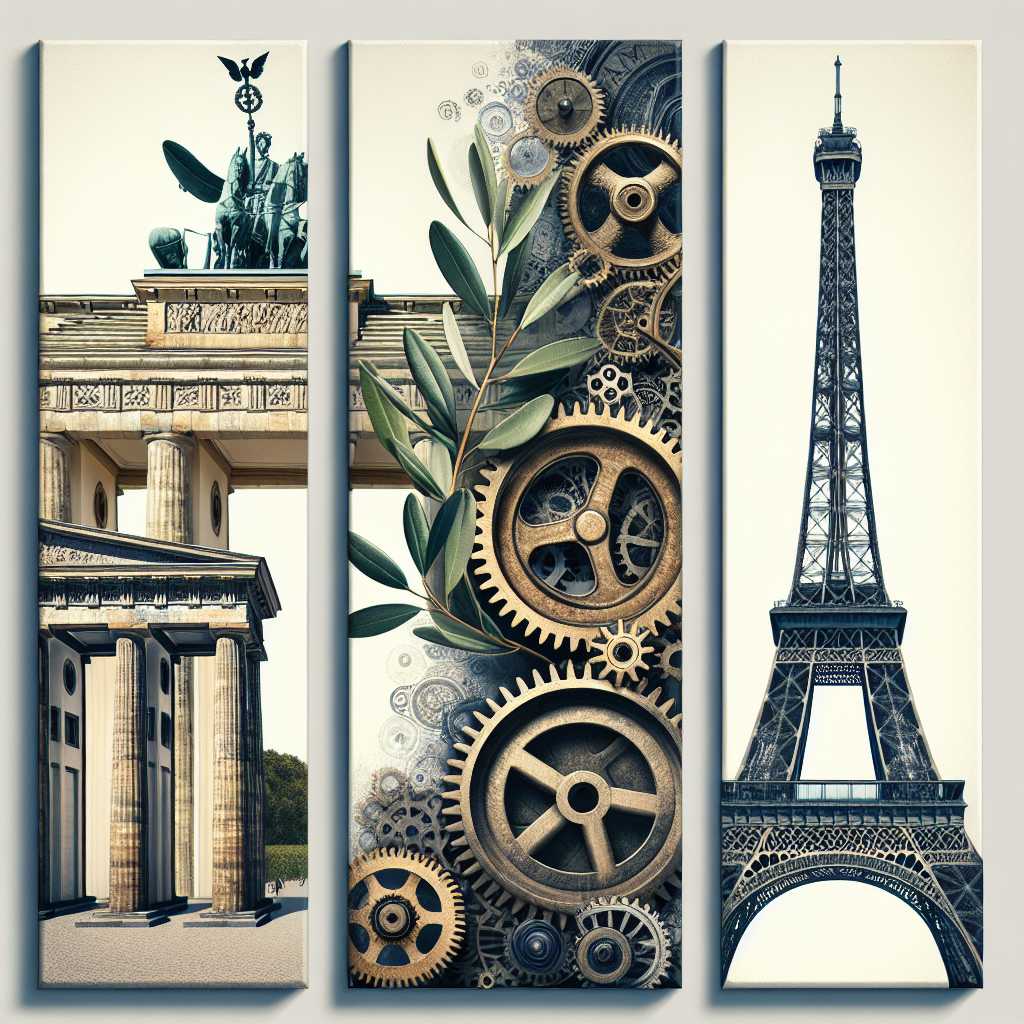Example Article
Historical Foundations and Cultural Identity
Germany and France, two pillars of European history, have long shared a complex relationship characterised by rivalry, cooperation, and mutual influence. Historically, the Franco-German dynamic has shaped much of Europe’s political landscape, from the devastating conflicts of the World Wars to the post-war reconciliation that laid the foundation for the European Union. Both nations possess rich cultural traditions that continue to define their identities today.
France’s cultural identity has been deeply influenced by its emphasis on art, philosophy, and revolutionary ideals, producing global icons such as Voltaire, Monet, and Sartre. Meanwhile, Germany’s cultural fabric is woven with philosophical rigor, classical music heritage, and engineering excellence, boasting figures like Kant, Beethoven, and Einstein. Despite occasional tensions, these cultural legacies have fostered a mutual respect that underpins contemporary Franco-German relations.
The shared border between these countries has also been a crucible for cross-cultural exchange. Regions like Alsace-Lorraine reflect a blend of French and German influences in language, cuisine, and architecture. This intermingling highlights not just historical conflict but also a unique hybrid identity that enriches both nations.
Economic Powerhouses in the European Landscape
Germany and France stand as Europe’s two largest economies, each contributing significantly to the continent’s overall economic strength. Germany is often hailed as the ‘economic engine’ of Europe due to its robust manufacturing sector, particularly in automotive engineering, machinery, and chemical industries. Its Mittelstand—small and medium-sized enterprises—forms the backbone of its export-driven economy.
France complements this with a diversified economy anchored by luxury goods, aerospace, agriculture, and tourism. The French government historically plays a more active role in economic planning than Germany’s more market-driven approach. Paris remains one of the world’s financial hubs and a centre for innovation in sectors such as artificial intelligence and green technology.
Despite differences in economic structure and governance style, both countries are deeply intertwined through trade partnerships and shared membership in the Eurozone. Their cooperation is crucial for EU-wide economic policies addressing challenges like digital transformation, climate change mitigation, and post-pandemic recovery.
Political Influence and European Integration
Politically, Germany and France have been at the heart of European integration efforts since World War II. The Élysée Treaty of 1963 marked a turning point by formalising cooperation between the two nations post-conflict. This Franco-German alliance has been instrumental in driving forward key EU initiatives such as the single market, monetary union, and common foreign policy.
However, their political approaches sometimes diverge. France often advocates for a stronger centralised European Union with increased sovereignty at Brussels’ level, while Germany tends to favour pragmatic consensus-building among member states with an emphasis on fiscal discipline. These differing perspectives reflect deeper national priorities shaped by historical experiences and domestic politics.
Nevertheless, despite occasional disagreements over EU strategy or international affairs—such as defence policy or relations with Russia—the partnership remains pivotal. Their collaboration provides stability in an era marked by geopolitical uncertainty and rising populism within Europe.
Sports Rivalry: More Than Just a Game
The sporting rivalry between Germany and France is emblematic of their broader competitive spirit and mutual respect. Football is undoubtedly the most prominent arena where this rivalry plays out on an international stage. Historic encounters such as the 1982 FIFA World Cup semi-final or the dramatic 2014 World Cup quarter-final have become part of football folklore.
Beyond football, both countries excel in various sports including cycling—home to iconic events like the Tour de France—and handball. These competitions foster national pride but also serve as cultural bridges that bring fans together across borders.
Sporting events act as microcosms of Franco-German relations: intense competition balanced by admiration for each other’s skills and sportsmanship. These contests reflect not only rivalry but also shared values such as discipline, teamwork, and resilience.
Conclusion: Twin Engines Driving Europe Forward
Germany and France are more than mere neighbours; they are twin engines propelling Europe politically, economically, culturally, and socially. Their historical complexities have given way to a partnership that balances competition with collaboration across multiple domains.
While differences persist—in governance styles, economic models or visions for Europe—their alliance remains central to regional stability and progress. Mutual respect rooted in centuries of interaction ensures that despite challenges ahead—from technological disruption to geopolitical shifts—Germany and France will continue shaping Europe’s future together.
Understanding this multifaceted relationship offers valuable insights into how two distinct nations can harness rivalry to foster unity and drive collective success.
Notes
- Germany is Europe’s largest economy by GDP.
- France hosts one of the world’s most visited cities: Paris.
- The Élysée Treaty symbolises post-war reconciliation between Germany and France.
- Germany leads globally in automotive exports.
- France is renowned for its luxury goods industry.

